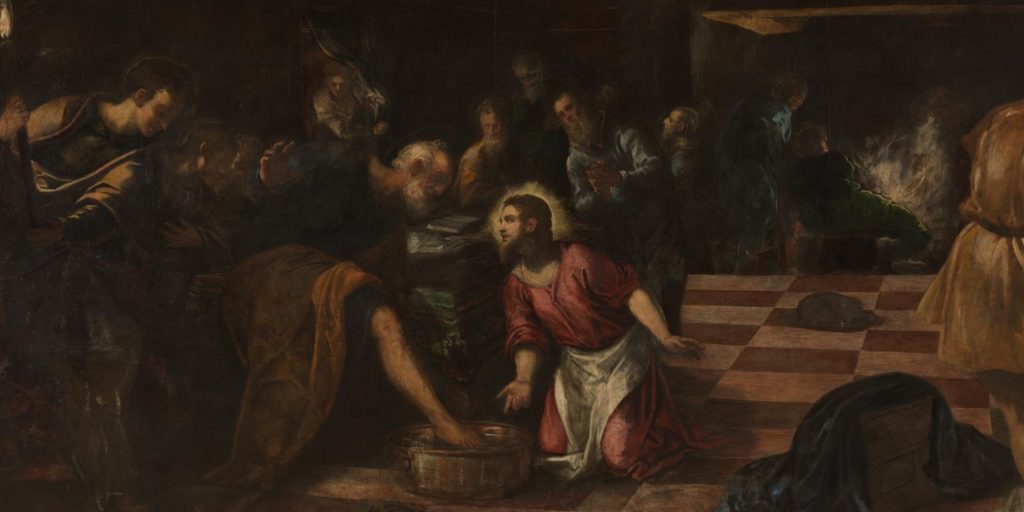
How the Kingdom Arrives in Matthew’s Gospel
One of the most well-known truths in the Gospels is that Jesus’s message centers on the arrival of the kingdom of God. And one of the most well-known truths in Matthew is that he describes it as the “kingdom of heaven” rather than kingdom of God.
Historically, the explanation has been that Matthew, because of his Jewish background, avoided using the name of God. However, a brief survey of Matthew reveals that at other places Matthew does not shy away from using the term God.
Therefore, more likely Matthew has a theological and narratival purpose for using this phrase. He employs the term “kingdom of heaven” to highlight the distinction between the kingdoms of the earth and the kingdom of heaven. Jesus’s ministry both challenges and conquers the kingdoms of earth by bringing the heavenly kingdom.
However, how does Jesus bring the kingdom? Though there are many ways one could describe it, this article will show that Jesus brings the kingdom of heaven to earth by the way of exile, scorn, and death. Without seeing Jesus’s path to the throne, readers will miss the nature of this king and kingdom. Rather than conquering the kingdoms of the earth with the sword, Jesus submits himself to exile and scorn. He becomes a servant and the sacrifice as the humble-servant-king who saves his people by not sending them into battle, but fighting their battle for them. All of this fulfills the Scriptures. Rather than conquering the kingdoms of the earth with the sword, Jesus submits himself to exile and scorn. Click To Tweet
The Way of Exile
While Matthew announces that Jesus is the Davidic king in his first verse, he makes readers go through his narrative to see how Jesus is installed as the king of the kingdom. Jesus is declared the Davidic king at the beginning, but he is immediately exiled by the sitting king of Jerusalem (Herod) in the second chapter of Matthew. And in case one thinks Jesus will return shortly, he actually spends most of his ministry outside of Jerusalem (Mattew 3–20). Only at the end does he return to his city. The narrative point is clear: to be enthroned Jesus first goes into exile and leaves the city of the King.
This pattern should both surprise and not surprise readers. It should surprise readers at a secular level, for this is not how kings came to conquer. Powerful kings don’t allow themselves to be put into exile. Being cast out of one’s city is a sign of defeat, not victory. Therefore, this exile of Jesus from David’s city is strange. However, the exile of Jesus from David’s city should also not be surprising to Jewish readers because both Israel and David’s life follows a similar arrangement. To bless the nation the people and the king must submit themselves to suffering. Suffering and service is the path to kingship. David’s life is pertinent here.
David is also appointed, contested, exiled, and then enthroned. Samuel anoints David as king (1 Sam. 16:1–13), and Saul accepts David at the beginning when he defeats Goliath (17:1–54). However, Saul becomes jealous of David and banishes him from his court (18:6–30). Although David and Jonathan covenant together at Ramah (1 Sam. 20), David must flee to Nob to escape Saul (1 Sam. 21). David then flees to Gath, a Philistine city; he hides at the cave of Adullam (22:1–5), and Saul pursues David at Engedi (Ps. 54). David flees to Gath a second time (1 Sam. 27:4) and then moves to Ziklag with his men (1 Sam. 27:6). David serves the Philistines for over a year (1 Sam. 29:3). The point is not to get caught up in the details but to notice that even after David has been anointed as the king, he is constantly on the run (or exiled). Even after being appointed as king, David must leave his city because of his son Absalom’s revolt (2 Sam. 15–19).
If the Jews were expecting a red carpet to be rolled out for the new Davidic king, then they have not been paying close attention to the story of David’s kingship. David’s journey to his kingship is anything but smooth. The journey of the King is one of deportation and distress. This specific movement, this journey that Matthew traces, is the way the kingdom comes. The way of Christ is the way of exile. The way of the kingdom of heaven is the way of rejection. The kingdom of heaven conquers the kingdom of the earth by doing what they least expect. It is truly the upside-down kingdom.
The Way of Scorn and Death
Exile is not only displayed in Jesus’s geographic movements but also in the way he is treated when he returns to Jerusalem. He travels the road of rejection not only in his ministry, but in the return of the king. When Jesus returns to Jerusalem, he is mocked and then submits himself to death. The cross becomes his throne. The kingdom comes, but it arrives through the king submitting himself willingly to the way of death and scorn.
When Jesus stands before the servants of the kingdom of the earth, they mock him. They strip him and put a scarlet robe around him (27:8). Scarlet robes were associated with royalty. They put a crown of thorns on his head and reed in his right hand mocking him saying “Hail, King of the Jews!” (27:29). They spit on him and take his own reed and strike him on the head. Then they strip of him of his robe and lead him away to be crucified. The soldiers crown him as king, and then strip him of his kingship.
The mocking continues as Jesus is on the cross. The Jewish leaders ask if he is the King of Israel why can’t he deliver himself (27:42)? They mock him in ways that contradict his kingship. All of them mock him for not being able to “save” himself. Kingship and salvation were linked. The king was to save his people and also protect himself. But this king is strapped to a wooden beam and can’t even save himself. At the beginning of Matthew’s Gospel, he notes Jesus was given his name because he would save his people from their sins (Matt. 1:21). The Davidic king was not there to simply assert his authority, but to save his people by going the way of scorn and death.
Matthew records the treatment of Jesus not only to make us feel sorry for him, but to communicate reversal. While Jesus is stripped of his clothes, he is crowned. While he is struck with a reed, he is handed a scepter. While the scarlet robe is torn from his bloody back, he is covered in robes of royalty. The spit parodies the kiss of homage with which eastern subjects greeted their rulers. Matthew illustrates for his readers through this narrative that the kingdom and the king they anticipated came, he just traveled down the stream of suffering and disdain. At a larger biblical theological level, Jesus was taking the curse upon himself. The crown of thorns echoed back to the sin of Adam where thorns would grow up and be a nuisance to flourishing. The reed by which Jesus was struck was a metaphor of humanity taking good gifts of God and turning them into weapons. The king took the sins of the people lay them on his shoulders and heaves them up on the cross.
Conclusion
My argument has been that Jesus came to bring the kingdom of heaven to earth. However, he did so in a surprising way: he traversed the way of exile, scorn, and death. Rather than being put on the throne Jesus is put on the cross. Rather than being worshiped, he is spit upon. The return of the Davidic King to his city is filled with gore and surprise. The story is old, but it is also new. The discipled scribe has brought forth treasures—his wisdom—and described how the kingdom of heaven has come to earth. In this way, he has shown his readers the nature of the heavenly kingdom: service, humility, and sacrifice.
*The material is adapted from my book with Baker.

